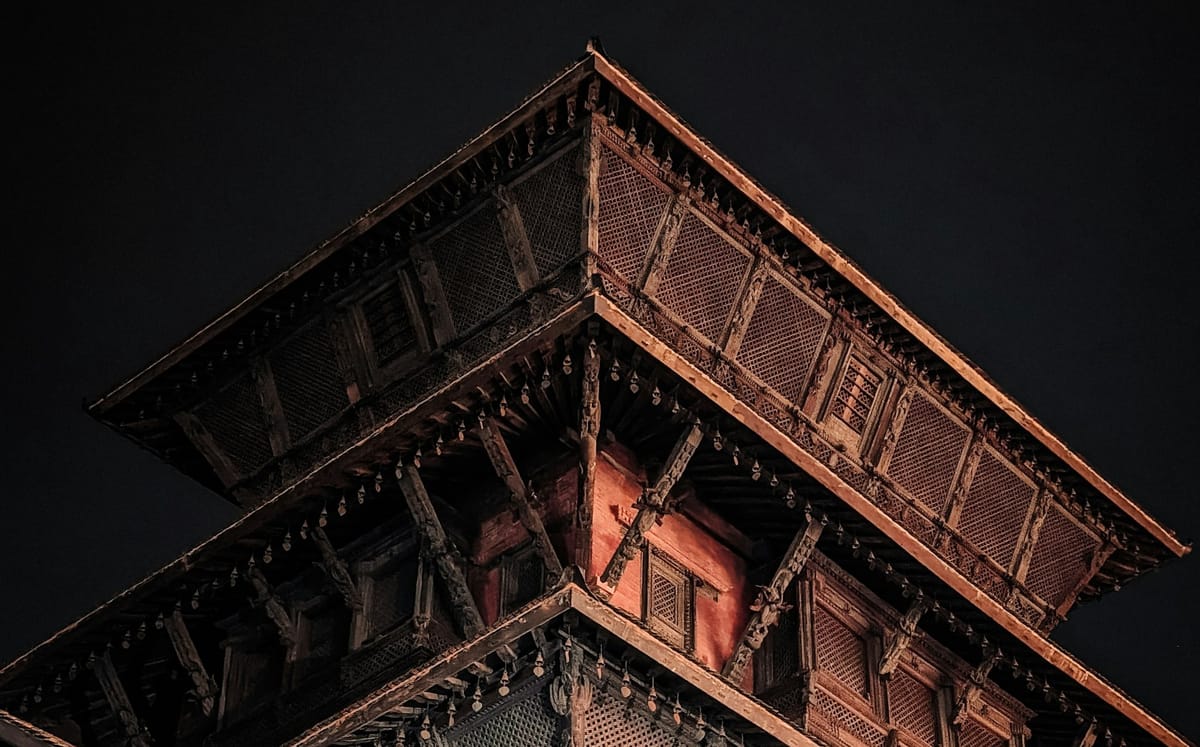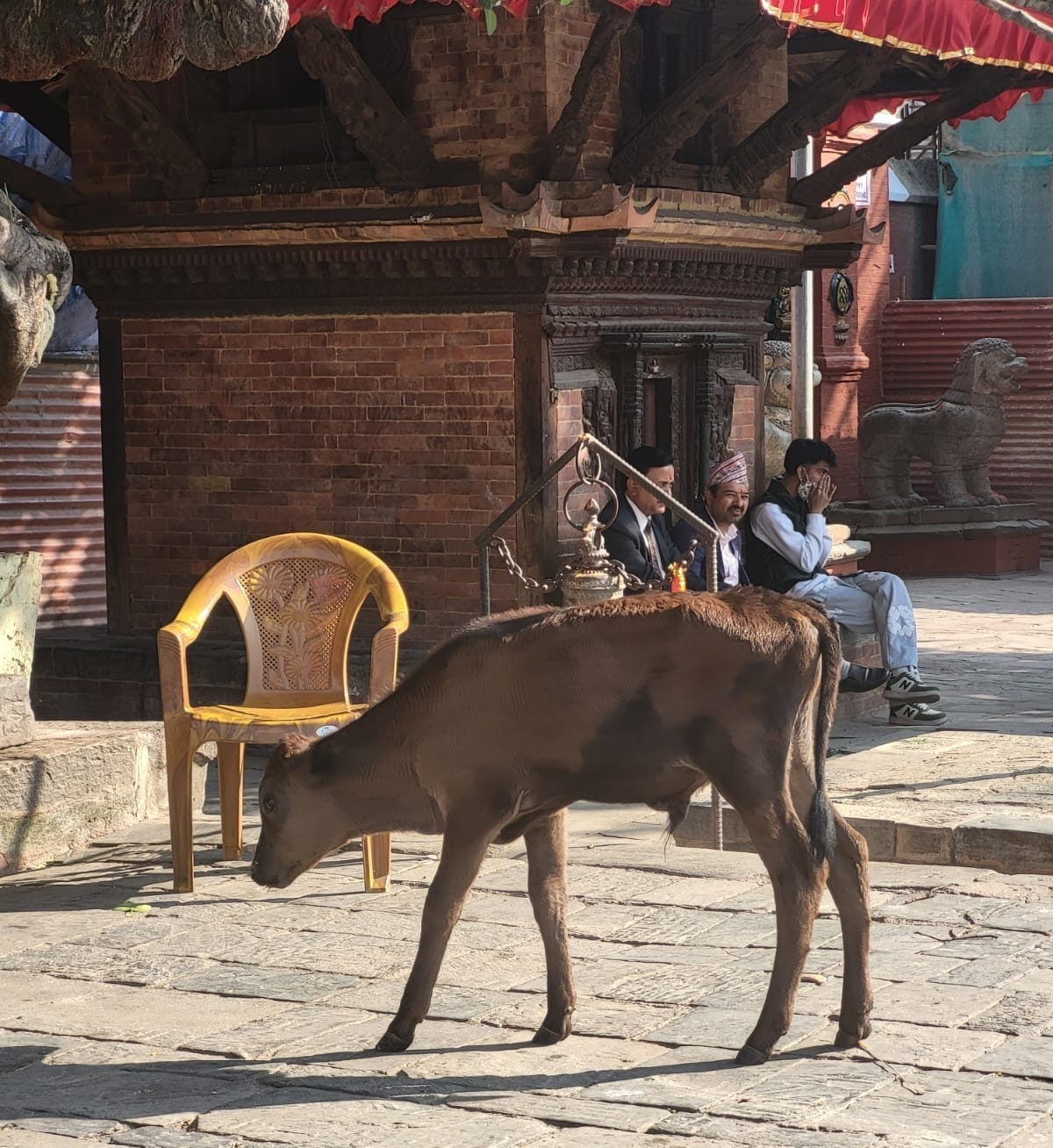Lost in Thamel
After our visit to the serene Boudhanath Stupa, wrapped in prayer flags and still buzzing from the spiritual calm, we caught a cab back toward the tourist center of Kathmandu—Thamel. We had barely made it a few streets in when the chaos swallowed us whole.

"Travel doesn’t always take you where you planned—it takes you where you need to go to remember who you are."
— Unknown
After we visited the serene Boudhanath Stupa, wrapped in prayer flags and still buzzing from the spiritual calm, we caught a cab back toward the tourist center of Kathmandu—Thamel. We had barely made it a few streets in when the chaos swallowed us whole.
Thamel is a maze. A vibrant, tangled, unapologetic maze. Alleyways fork and curl unpredictably. Scooters buzz past, street vendors shout over the honking traffic, and the air is thick with incense, dust, and the smell of frying oil. We got lost quickly. But not in a bad way—at first. There’s a certain magic to being overwhelmed in a place so alive. We were disoriented, yes, but also intrigued, swept up in a current of color and noise.
By now, it was almost noon, and hunger started to set in. We searched for nearby restaurants with good reviews and picked one that sounded promising. But spotting anything in Thamel is like finding a thread in a carpet. We walked in circles, squinting at signs and second-guessing every alley.
Finally, we found the restaurant—on the fifth floor of a worn-down building, after climbing an unlit stairwell that felt more like an escape route than an entrance. At the top, we hesitated. The place looked abandoned. Paint peeled from the walls, chairs stood askew, and silence hung heavy. Then a man popped up from behind a counter, startling us. With a smile that felt more forceful than friendly, he ushered us in and pointed to a table. Leaving felt rude, so we stayed, hoping not to get sick.
We sat. We ordered the most-reviewed dishes on Google, hoping for the best. When the food arrived, it looked... ominous—a deep brown, nearly black, unfamiliar dish. I took a bite—it was edible, even oddly flavorful—but the anxiety of potential food poisoning sat heavier than the meal itself. Kiki barely touched hers, disguising uneaten bites under her spoon and napkin. I finished mine out of politeness.
As soon as we paid, we made a quick exit, walking past a group of rough-looking men who watched us closely from the stairwell and corridor. Outside, the sun felt like a relief. The open air washed over our nerves.
The scam
We followed the river of people through Thamel, letting the crowd carry us south toward Durbar Square. The streets grew tighter, more chaotic. We passed shrines tucked into alley corners, motorbikes honking past feet and fruit stalls, the sacred and the everyday colliding on every block.
Then a young Nepali man began walking beside us. He introduced himself, said he was practicing English, and offered to show us around for free. His smile was wide, persistent. Our scam alarm flickered on immediately. We politely declined, but he didn’t stop. He kept pace with us, chatting casually about the temples, the gods, the daily rituals of Kathmandu. He told us his parents had died in the 2015 earthquake, and that he now worked and lived in a nearby art gallery.
Something in his story tugged at our compassion. Against our better judgment, we agreed to follow him—just for a short while—to “see the gallery.” A part of me stayed on alert, watching every step, every turn. My gut didn’t like it, but I didn’t want to offend him.
He led us down a narrow path, past shacks and courtyards shaded by laundry lines. When we reached the gallery, I was relieved to see a sign. The place existed. It was real—or so it seemed.
But inside, the mood shifted. We walked up a dark stairwell and passed a small room with no windows, where several men sat silently around a table, watching us. Another man came behind us, blocking our retreat. I looked at Kiki. Her expression said it all.
Upstairs, in another windowless room, our “guide” began showing us his paintings—traditional Buddhist mandalas, landscapes, portraits. But he wasn’t interested in explaining the art. He wanted us to buy. The other man hovered behind me, trying to nudge me further into the room. I stayed in the doorway, one hand behind me, ready to pull Kiki out.
The tension became too much. I grabbed her arm, offered a firm “No, thank you,” and started down the stairs. The men didn’t follow—yet. But as we stepped into the open courtyard, a crowd began to form. Twenty people, maybe more, suddenly followed us. Our “friend” now begged for money, not art. His smile had vanished.
We kept walking, fast but controlled. Eyes on every corner. The alley ahead was empty—too empty. At the junction, we saw people standing at every branch, watching us. It felt coordinated.
Then, salvation: two fellow tourists walking ahead. We caught up quickly, breathless, explained the situation, and asked to walk with them. Just being near them shifted the energy. The crowd melted away, vanishing into side streets like mist.
My heart didn’t stop pounding until we reached the open plaza of Durbar Square. A sense of safety returned, but only barely. A man in a uniform demanded we pay to enter the site. We were done paying. Done being followed, scammed, pressured. We walked the perimeter, took a few photos from the outside. A cow wandered casually down the middle of the street, oblivious to the stress humans put on themselves.

On the way back to Thamel, we stopped for a drink and a plate of momos. Something warm, something familiar. We sat in silence for a while, decompressing.
That evening, we returned to our favorite little restaurant—the one with the prayer flags, the kind waitress from the mountain village, and the slow but comforting meals. It felt like returning to solid ground.
What a day.